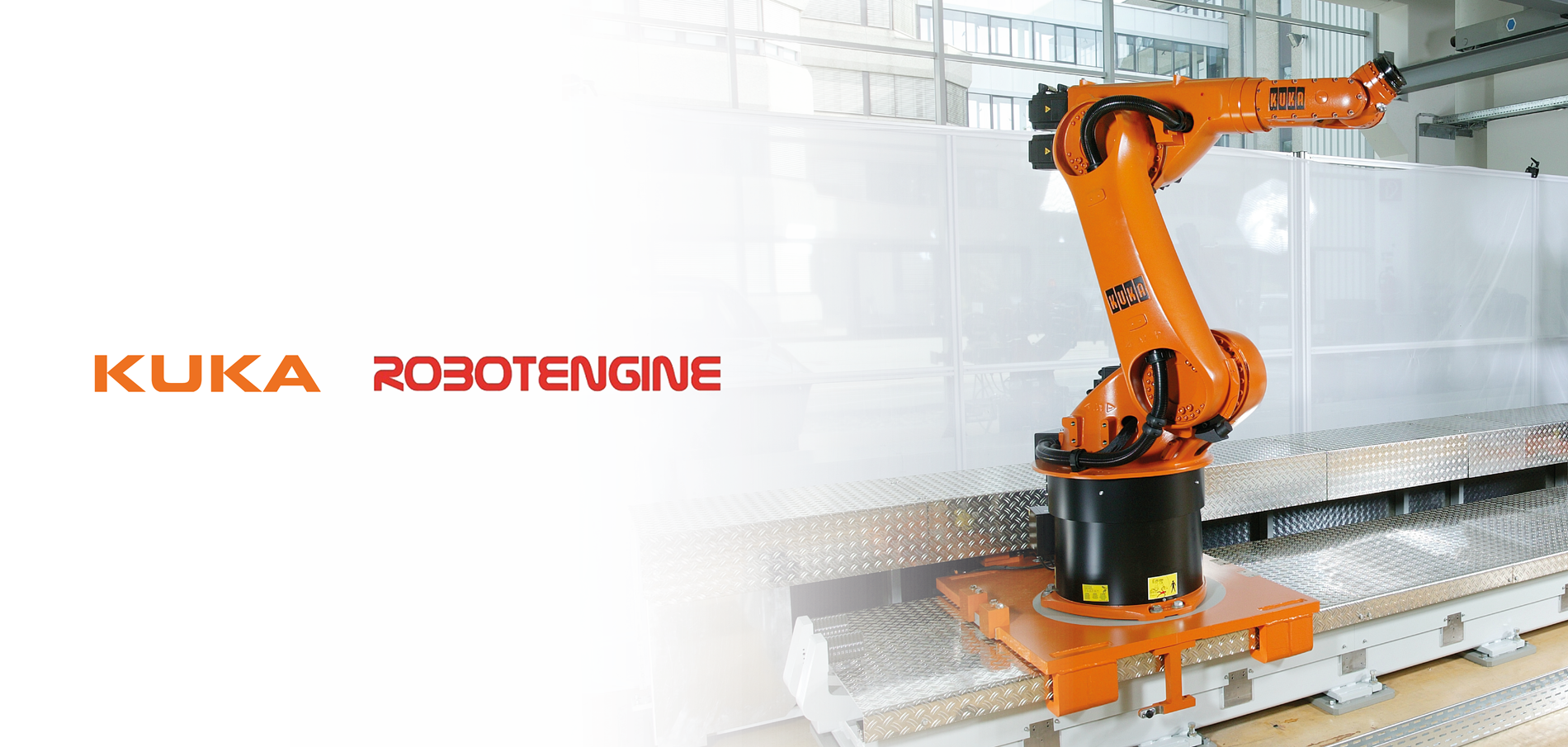The ‘Seventh Axis’ is a recent phenomenon in the sphere of robotic-automation, with a promise of maximising returns for manufacturers, the world over. In the UK and Ireland, the use of ‘linear tracks’ for robots is growing in popularity; to gain insight onto how this is being implemented in South Africa (the most recent addition to KUKA UK’s geographic market-cluster) we spoke to Andre Botha and Eugene ‘Titch’ Taylor from our Silver system-partner ‘ROBOTENGINE’.
Read the final part of our insightful discussion, below:
In your experience, as robotic integrators, which sectors and applications see the highest demand for ‘linear tracks’?
Andre:
It's probably on the ‘handling’ side of things – for instance, ‘pick and place’. The ‘picking’, ‘placing’ and ‘palletizing’ of heavy equipment, to be specific. Within our industry, the CNC industry, we see the highest demand for ‘linear tracks’ amongst ‘boatbuilding’ manufacturers, whose sole purpose is to increase the work-envelope. In-terms of ‘rotary tables’ the most usage, strangely enough, comes from artists – particularly sculptors who need to rough out pieces of stone, marble, or whatever material they’re using, to get them to their basic form. These artists are finding that robots carry out this process much quicker, meaning they can proceed with their work faster and more efficiently.
Titch:
Quite honestly, I don't think we've installed ‘rotary tables’ in any other industry outside of the ‘arts and ‘boating’, except for ‘bathroom’ manufacture.
Likewise, do you feel that certain manufacturing sectors are underutilising linear tracks and the ‘seventh axis’, which could benefit significantly from such means of automation?
Andre:
Yes, and this is true across the board, with regard to all manufacturing sectors in South Africa. It is most definitely an underutilized piece of equipment.
Titch:
Quite a lot of these sectors still utilise manual-trolleys and manual-pushing. This is a real pain in the backside because these guys often mess things up and alter things; by contrast ‘linear-tracks’ can efficiently operate thirteen to fourteen pieces at one time, with the utmost accuracy.
Generally, what is the value of investing in linear tracks, as opposed to utilising multiple static robot-units on the plant floor? Are there significant differences in TCO (Total Cost of Ownership)?
Andre:
Well, yes, as mentioned previously, a 6-metre track basically costs the same amount of money as another robotic arm, so that’s kind of where your ‘breakpoint’ is, or in laymen’s terms, where you’re getting to. It is slowly starting to be explored, but you need to remember that the industry is in its infancy, therefore people are still getting used to the costs of robotics. ‘Total Cost’ is what they look at, and suddenly you can go from one figure to another, which doubles once a ‘linear track’ comes into play. Is the incorporation of robotics a recent phenomenon within South African ‘’General Industry’?
Andre:
Again, ‘General Industry’, as a whole, is pretty much in its infancy, from a South African standpoint. I would say that robotic automation, in particular, was only introduced to this industry in the last 5 to 10 years, actually.
Titch:
There has been automation in-terms of robotics. You know, automated facilities that, one could argue, have been ‘robotically’ controlled – not necessarily with a robot, but the manner and process itself. Automation has been around for a long time – for instance, South African-based breweries have been using it for decades. They obviously wouldn’t use robots, as such, but more so automate the process of taking a pile of grain, dumping into a bin, mixing it, and making beer. The ‘robotic’ side of it, is a very well understood topic – using actual robots, however, benefits a lot of the finer, more intricate processes.
Could you describe an instance wherein the integration of ‘linear tracks’ onto robotic systems has benefited manufacturing operations for any of your clients?
Andre:
I suppose my Malaysian client is probably the most successful. He's got twin tracks – two 12-metre tracks running parallel to each other, giving them a massive of work-envelope. The client uses this for mould-making on the yachts they manufacture. The envelope is 12 metres by 6 metres, allowing the robots to work on each side – so they’re basically able to create and produce very accurate, as well as massive parts using that system. For comparison, if you had a single robot, or two robots, not on linear tracks, it would be a massive undertaking, with a lot of smaller parts having to be joined together. What they are able to do, through their implementation of twin tracks, is put this massive block of foam down and epoxy paste, to produce complete deck sections. The client originally bought one 12-metre track, in addition to a turntable and within a year they bought another 12-metre track because they saw the benefits of it. For them, it has been a massive improvement to their production system and a massive saving also, as they were initially outsourcing their parts.
Finally, do you encourage the use of ‘linear tracks’ and highlight the benefits of the ‘seventh axis’, amongst your existing South African client base?
Andre:
Overall, within South Africa, there is definitely a need for ‘linear tracks’, we are just struggling to find a market for it at the moment, whilst the benefits of the ‘seventh axis’ are still being realised, given the infancy of robotic-automation in this country.
To find out more about ROBOTENGINE visit: https://therobotengine.com or to find out more about linear tracks, or KUKA's range of robot periphery, please click here
If you missed part one of this informative discussion, please click here

